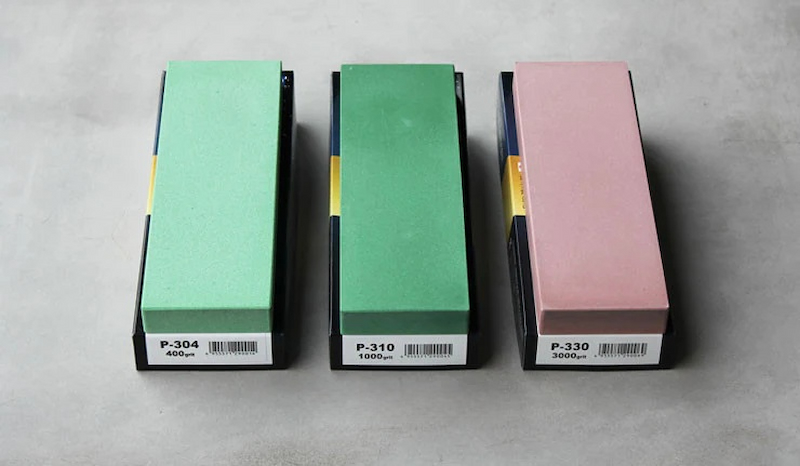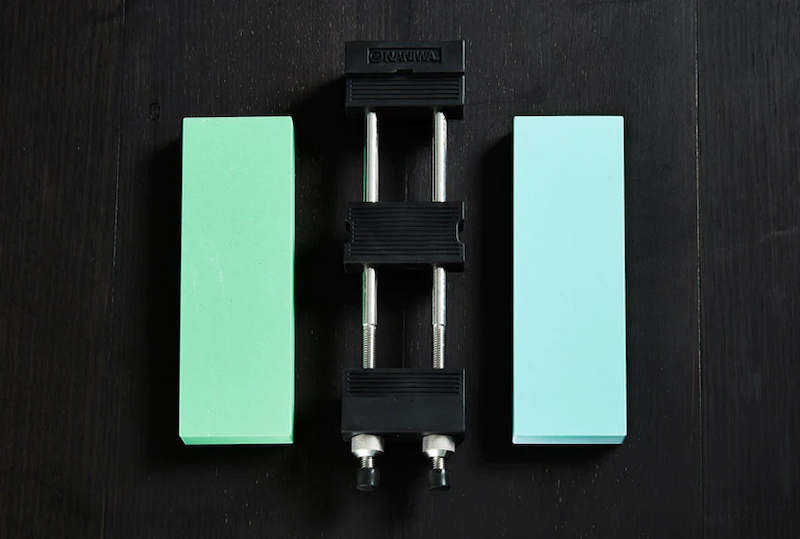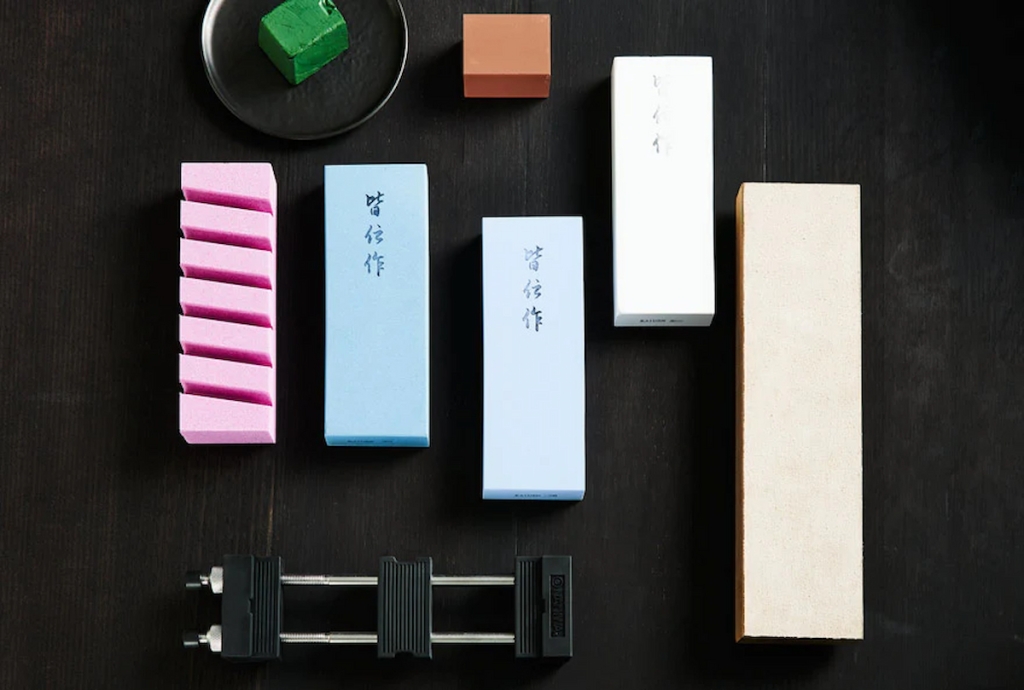Japanese water stones, no matter if they’re natural or synthetic, are famous for their fast and efficient sharpening abilities. They’re not only suitable for Japanese blades but also Western ones. The loose binding of the small cutting particles in the stone ensures that during the sharpening process, the surface particles are swiftly rinsed away, making room for fresh and sharp particles to engage with the blade. The easiest way to learn how to use them is to get a Japanese sharpening stone set. They’re easy to use and will help you master the technique. It’s important to note that these whetstones should only be lubricated with water (the use of any other lubricants is strictly discouraged).
Sharpening Sets and Their Use

If you intend to remove chips and restore a very dull blade, it’s best to use a whetstone set with a grain size ranging from #120 to #400. In this case, go for stones with a grain size between #120 and #240. For regular sharpening, get stones with a grain size between #700 and #2000. Choose stones with a grain size between #700 and #1200.
To eliminate fine scratches and the burr left by coarser stones, as well as to polish the surface, go for stones starting from around 2000 grains. There is technically no upper limit beyond this, but stones above approximately #10000 don’t provide any significant practical improvement in the blade’s sharpness. There’s no Japanese measurement standard above #8000 grit. So, when it comes to stones labelled with a finer grit, you must rely on the manufacturer’s claim.
If you have a reasonable sharpening experience, I suggest using a finish stone with a grit size of 8000. However, for uncertain people or beginners, stones with a grit size between #3000 and #6000 will deliver the desired results.
If you need to do a considerable amount of sharpening, you’ll need at least three stones: one for grinding, one for sharpening, and one for honing.
For people who only sharpen blades occasionally and don’t expect to remove chips from the blade’s edge, the combination stone will be a sufficient option. The choice of stone size mainly depends on the trade-off between cost and speed. Larger stones allow for faster work, while smaller stones are equally effective but require a bit more time.
Which One to Choose if You’re a Beginner?

If you’re new to sharpening or don’t do it often it’s best to start with a combination whetstone that has a grit between 1000 and 6000. For instance, the Naniwa Starter Pack is a perfect beginner’s Japanese sharpening stone set.
These stones are crafted using tightly packed resin-bonded grit and offer the following benefits:
• No need for pre-soaking – just sprinkle some water on the surface and begin sharpening.
• Cuts faster compared to regular stones.
• Lasts longer – approximately twice as long as regular stones.
• Creates much less mess compared to “cement” type stones.
The Naniwa Sharpening Stone series includes a range of grits from 400 to 12000, all made using the same resin-bonded process to ensure a consistent “feel” throughout the sharpening process. It’s best for beginners to avoid using stones coarser than #1000 until they feel comfortable with their technique.
Coarse Stones #1000
Stones with a number lower than 1000 are mainly used for repairing damaged knives. If your blade has any nicks or chips, these stones will quickly remove them. These dual stones have a coarse side for fixing nicks and chips, and a medium side for general sharpening. If your knives have completely lost their edge, these stones will also restore it. These whetstones are excellent for damaged or extremely dull knives. However, due to their abrasiveness, they should not be used for general sharpening as they do not provide the best finish on your blade edge.
Medium Stones (#1000 to #3000)
The range of medium stones varies from #1000 to #3000. When it comes to sharpening your knives, the #1000 grit stone is the go-to option. It’s ideal for restoring the lost edge of your knives and getting them back to their sharpness. However, it’s important not to overuse this stone as it can wear down your knife. If you prefer sharpening your knives more regularly, you can opt for the #2000 or #3000 grit stones. These stones are less coarse and are suitable for regular sharpening, but keep in mind that their main purpose is sharpening, not maintaining the edge. Once you establish a routine, you’ll become familiar with how often you need to use your medium stone.
Finishing Stone
The range of finishing stones goes from #4000 to #8000. Your #4000 and #5000 grit stones work as a bridge between your sharpening and superfine finishing stones. These stones can give you a super refined edge, similar to the King stone.
While these stones can be used as finishing stones on their own, they are particularly useful for Western knives that have a ‘U’ shaped cutting edge. In such cases, a #5000 grit stone may be sufficient. However, if you want an even finer edge, you can opt for the #6000 or #8000 super fine stones.
If you primarily use your knife for cutting meat, stopping at #4000 or #6000 grit is perfectly fine. But if you mainly use it for vegetables or fruit, going all the way to #8000 grit is recommended. The #8000 grit stone provides an extremely fine grit size, perfect for the final polishing of bevels and back sides. It will give your knife blade a fine, razor-sharp edge.

Leave a comment